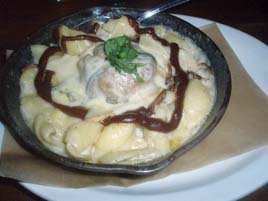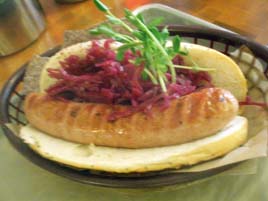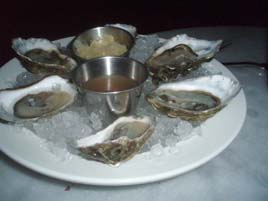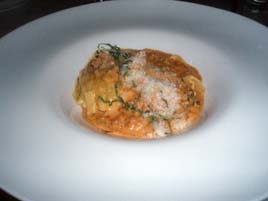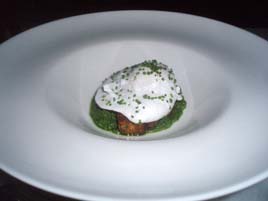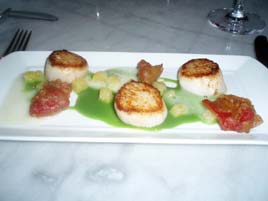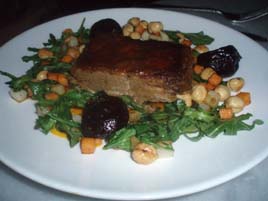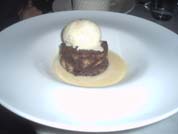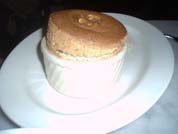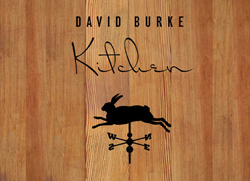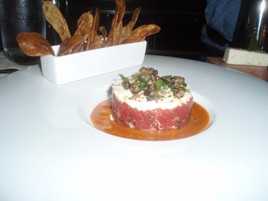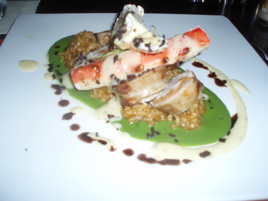Fedora
 Monday, April 18, 2011 at 04:51PM
Monday, April 18, 2011 at 04:51PM 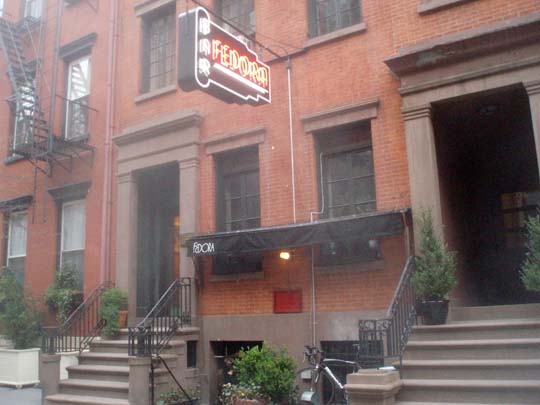
Gabriel Stulman hadn’t planned to open another restaurant so soon. After launching Joseph Leonard in late 2009 and Jeffrey’s Grocery in late 2010, he was in no rush to expand his empire. But when 90-year-old Fedora Donato decided to retire from the West Village space she’d occupied since 1952, Stulman felt he had to take it.
 The new Fedora has very little in common with the old, but it was a shrewd move to keep the iconic name, as Keith McNally did at nearby Minetta Tavern. I’m not sure how much of the décor he kept, aside from the neon sign outdoors, but the renovation took more than half a year.
The new Fedora has very little in common with the old, but it was a shrewd move to keep the iconic name, as Keith McNally did at nearby Minetta Tavern. I’m not sure how much of the décor he kept, aside from the neon sign outdoors, but the renovation took more than half a year.
The deep, narrow space, as now re-decorated, features a long, pretty bar (which serves a full menu) on one side and and an odd assortment of tables—some wood, others marble; some square, others round—on the other.
Much like David Chang, Stulman has become a savant for the no-reservations movement, giving a variety of (usually self-serving) reasons why they aren’t taken at Joseph Leonard or Jeffrey’s. He’s changed his tune at Fedora, or perhaps is changing it daily. Less than a month ago, Adam Platt wrote in New York that reservations are taken only for parties of four or more. Currently, they’re taken for parties of two or more, but only on the same day.
I am actually surprised that he relented. I was seated without a reservation at 6:15 p.m. on a Friday evening, but the place was full shortly thereafter, and the hostess turned away a steady stream of walk-ins. There is very little waiting space when the bar is full, and perhaps he now takes reservations to avoid alienating his neighbors, who might be annoyed by a long queue on the formerly quiet street. Make no mistake: queue, they would. Fedora is as big a hit as all of Stulman’s other places.
The kitchen, no longer Italian, is run by Mehdi Brunet-Benkritly, an alumnus of the famed Montreal restaurant Au Pied de Cochon. (Another PdC vet runs the hit Long Island City diner, M. Wells.) The menu isn’t a knock-off of his old haunt at all: there isn’t a single foie gras dish, whereas Au Pied do Cochon serves it by the bucket. Appetizers are $9–14, entrés $20–28 (not counting the obligatory côte de boeuf for two, $85), side dishes $8.
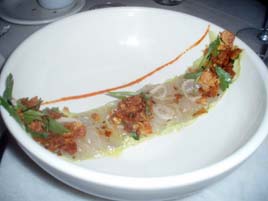
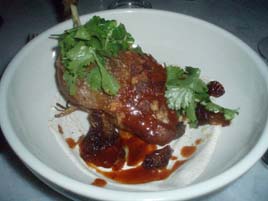
I adored the Cured Spanish Mackerel ($12; above left), served on a bed of puréed avocado with crushed chips for textural contrast. But a fine Crisped Duck Leg (above right) was ruined in a heavy slurry of barbecue sauce, a misconceived dish if ever there was one, and at $22 it is not exactly a bargain for such a small portion. The conceit of serving every dish in a bowl, whether it’s suitable or not, is not exactly endearing.
The staff is friendly and well trained. It is surely not their fault that the bread service consisted of two meager slices smaller than the palm of my hand, with soft butter that you’re expected to spread with the same knife given out for the appetizer. The two-page wine list is international, and fairly priced by my reckoning (see Decanted for more). The server offered a taste before pouring a glass of a Chateau Smith, a courtesy many expensive restaurants shamefully omit.
For all its limitations, I was prepared to love Fedora. I had a terrific dish and a dud, and at this point I can’t say which one was the aberration.
Fedora (239 W. 4th Street near W. 10th Street, West Village)
Food: *
Service: *
Ambiance: *
Overall: *



